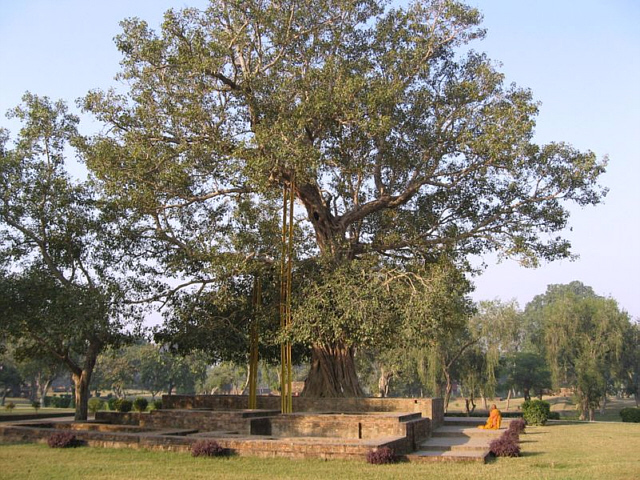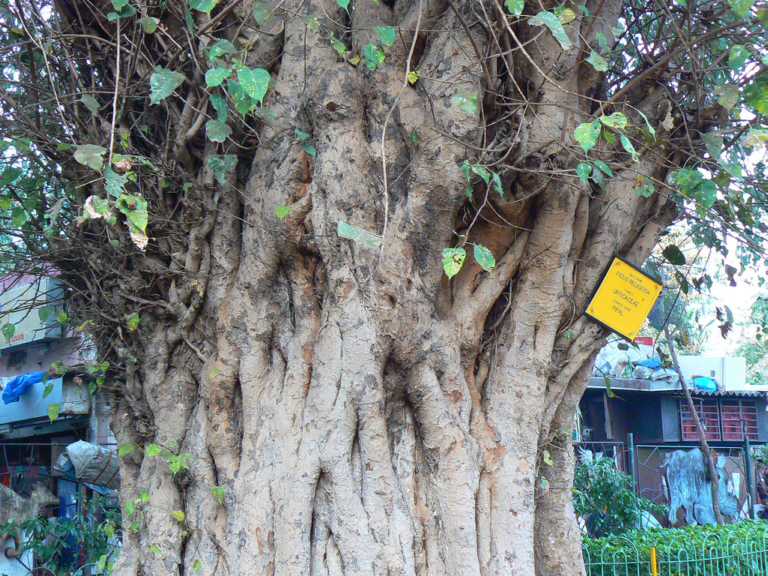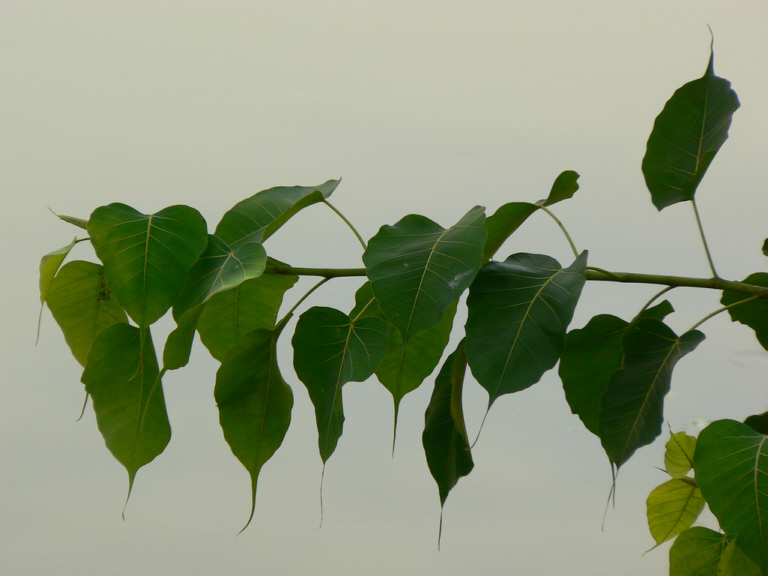

Zitierweise / cite as:
Carakasaṃhitā: Ausgewählte Texte aus der Carakasaṃhitā / übersetzt und erläutert von Alois Payer <1944 - >. -- Anhang A: Pflanzenbeschreibungen. -- Ficus religiosa L. -- Fassung vom 2007-06-29. -- URL: http://www.payer.de/ayurveda/pflanzen/ficus_religiosa.htm
Erstmals publiziert: 2007-06-27
Überarbeitungen: 2007-06-29 [Ergänzungen]
Anlass: Lehrveranstaltung SS 2007
©opyright: Dieser Text steht der Allgemeinheit zur Verfügung. Eine Verwertung in Publikationen, die über übliche Zitate hinausgeht, bedarf der ausdrücklichen Genehmigung des Verfassers
Dieser Text ist Teil der Abteilung Sanskrit von Tüpfli's Global Village Library
WARNUNG: dies ist der Versuch einer
Übersetzung und Interpretation eines altindischen Textes. Es ist keine
medizinische Anleitung. Vor dem Gebrauch aller hier genannten Heilmittel wird
darum ausdrücklich gewarnt. Nur ein erfahrener, gut ausgebildeter ayurvedischer
Arzt kann Verschreibungen und Behandlungen machen!
Falls Sie die diakritischen Zeichen nicht dargestellt bekommen, installieren Sie eine Schrift mit Diakritika wie z.B. Tahoma.
Verwendete und zitierte Werke siehe: http://www.payer.de/ayurveda/caraka0001.htm

Abb.: Ficus religiosa
L. — Bobaum: Anandabodhi tree in Jetavana
Monastery, Sravasti, Uttar Pradesh, India
[Bildquelle: Wikipedia]

[Bildquelle:
dinesh_valke. --
http://www.flickr.com/photos/dinesh_valke/372117597/. -- Zugriff am
2007-06-29. --
![]()
![]()
![]() Creative
Commons Lizenz (Namensnennung, keine kommerzielle Nutzung, keine Bearbeitung)]
Creative
Commons Lizenz (Namensnennung, keine kommerzielle Nutzung, keine Bearbeitung)]

Abb.: Ficus religiosa
L.
[Bildquelle:
dinesh_valke. --
http://www.flickr.com/photos/dinesh_valke/425547120/. -- Zugriff am
2007-06-29. --
![]()
![]()
![]() Creative
Commons Lizenz (Namensnennung, keine kommerzielle Nutzung, keine Bearbeitung)]
Creative
Commons Lizenz (Namensnennung, keine kommerzielle Nutzung, keine Bearbeitung)]
Drury:
"Ficus religiosa (Linn.) Do.
- Poplar-leaved Fig-tree, Eng.
- Ashwuth, Beng.
- Pippul, Hind.
- Arasum-marum, Tam.
- Ray, Raghie, Tel.
- Arealu, Mal.
- Ani-peepul, Duk.
Description.—Tree; leaves long-petioled, ovate, cordate, narrow acuminate, acumen one-third the length of the leaf, entire, or repandly undulated towards the apex; fruit-receptacles axillary, paired, sessile, depressed, size of a small cherry, appearing in the hot season and ripening in the rainy season.— Wight Icon. vi. t. 1967.—Roxb. Fl. Ind. iii. 547.—Urostigma religiosum, Miquel.—Bheede, i. t. 27.-------Common all over India.
Medical Uses.—The seeds are said to possess cooling and alterative qualities, and are prescribed in electuary and in powder. Leaves and young shoots are used as a purgative, and an infusion of the bark is given internally in scabies, though of doubtful efficacy.— Ainslie. Wight.
Economic Uses.—Of this tree there are two nearly-allied species. The tree is commonly distributed over the country. It is much respected by the natives, who are very unwilling to cut it down at any time. It is frequently to be met with near pagodas, houses, and
other buildings. The Hindoos venerate it from a superstitious belief that their deity Vishnoo was born among the branches. The petioles being very long and slender, the leaves tremble in the air like those of the aspen-tree. Silk-worms are very fond of the leaves. The Arabs use them in tanning. Birds are very fond of the fruit, and often drop the seeds in cracks of buildings, where they vegetate, and occasion great damage if not removed in time. The wood is light and of no use.—Roxb. Wight."
[Quelle: Drury, Heber <1819 - 1872>: The useful plants of India : with notices of their chief value in commerce, medicine, and the arts. -- 2d ed. with additions and corrections. London : Allen, 1873. -- xvi, 512 p. ; 22 cm. -- s.v.]
Dutt:
"FICUS RELIGIOSA, Linn. Sans. Asvattha. Vern. Pipal, Hind. FICUS BENGALENSIS, Linn. Sans. Vata. Vern. Bar. Hind,
FICUS GLOMERATA, Willd. Sans, Udumbara. Vern. Jagnodumar, Beng. Gular, Hind.
FICUS INFECTORIA, Roxb, Sans. Parkati. Vern. Pākur, Beng. Pākri, Hind.
The root-barks of these four species of Ficus together with that of Azadarachta lndica pass by the name of Panchavalkala or the five barks, and are used in combination. A decoction of these barks, called Pancha valkala kashāya is much used as a gargle in salivation, as a wash for ulcers, and as an injection in leucorrhoea. The powdered root-bark of Ficus religiosa rubbed with honey is applied to aphthous sores of children. It is also sprinkled over " unhealthy ulcers to improve their condition and promote granulation.
The figs of Ficus glomerata are considered astringent, stomachic and carminative and are given in menorrhagia and haemoptysis in doses of one tola of the dried fruits with sugar and honey. The fresh juice of the ripe fruit is given as an adjunct to a metallic medicine for diabetes and other urinary complaints, called Vrihat vangesvara rasa, (see Tin)."
[Quelle: Dutt, Uday Chand: The materia medica of the Hindus / Uday Chand Dutt. With a glossary of Indian plants by George King. -- 2. ed. with additions and alterations / by Binod Lall Sen & Ashutosh Sen. -- Calcutta, 1900. - XVIII, 356 S. -- S. 235.]